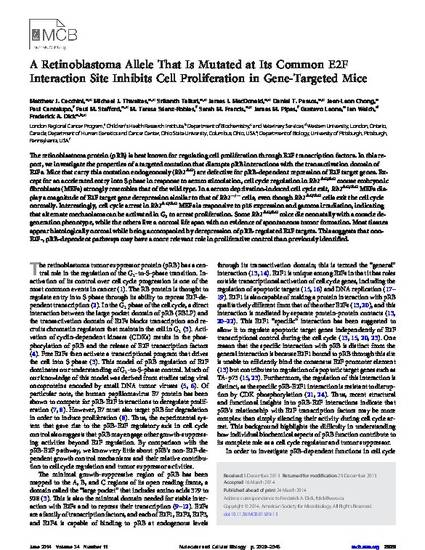
The retinoblastoma protein (pRB) is best known for regulating cell proliferation through E2F transcription factors. In this report, we investigate the properties of a targeted mutation that disrupts pRB interactions with the transactivation domain of E2Fs. Mice that carry this mutation endogenously (Rb1δG) are defective for pRB-dependent repression of E2F target genes. Except for an accelerated entry into S phase in response to serum stimulation, cell cycle regulation in Rb1δG/δG mouse embryonic fibroblasts (MEFs) strongly resembles that of the wild type. In a serum deprivation-induced cell cycle exit, Rb1δG/δG MEFs display a magnitude of E2F target gene derepression similar to that of Rb1-/- cells, even though Rb1δG/δG cells exit the cell cycle normally. Interestingly, cell cycle arrest in Rb1δG/δG MEFs is responsive to p16 expression and gamma irradiation, indicating that alternate mechanisms can be activated in G1 to arrest proliferation. Some Rb1δG/δG mice die neonatally with a muscle degeneration phenotype, while the others live a normal life span with no evidence of spontaneous tumor formation. Most tissues appear histologically normal while being accompanied by derepression of pRB-regulated E2F targets. This suggests that non- E2F-, pRB-dependent pathways may have a more relevant role in proliferative control than previously identified. © 2014, American Society for Microbiology.
Available at: http://works.bepress.com/gustavo_leone/13/
